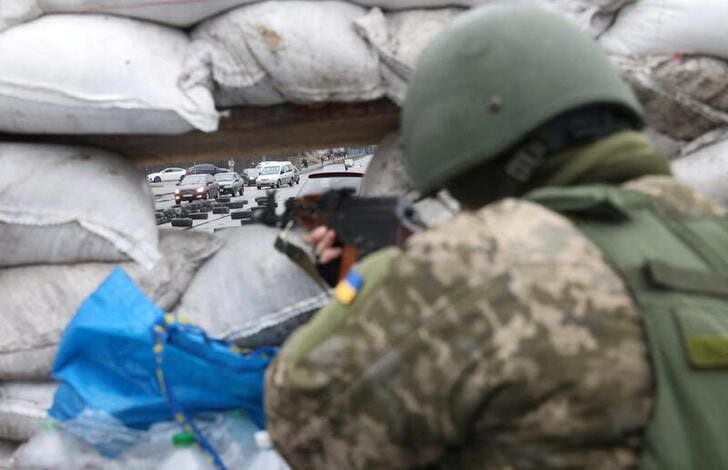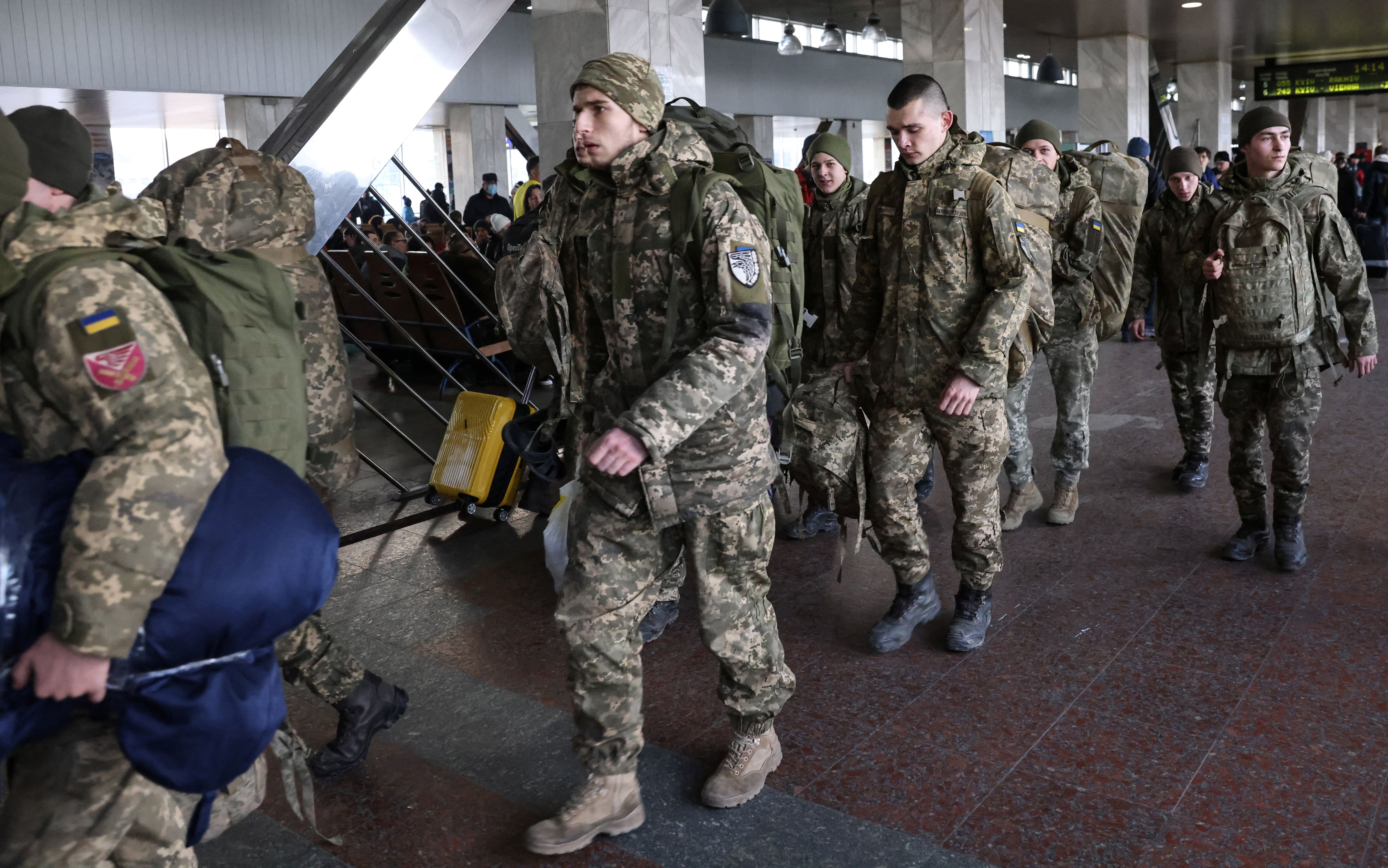
On January 30, 1918, a force consisting mainly of military cadets and armed students in a hurry took up positions at Kruty, a railway stop northeast of Kiev, to defend the capital of the Ukrainian People's Republic against Soviet Russia. The republic had only declared its formal independence a week earlier to reject the aspirations of Vladimir Lenin's Bolshevik Party to control Ukraine.
By the end of the day, Kruty's young defenders had succumbed to the superior Red Army of Soviet Russia. With the help of the aligned local Bolshevik militias, the Reds seized Kiev itself on February 7.
Occupation and identity
The history of Ukraine after the battle for Kiev is complex and confusing. But as a historian of Ukraine, my research has found that this first period of modern independence, from 1918 to 1920, is central to a national narrative that maintains that Ukraine is a sovereign country, separate from Russia.
This sense of identity makes occupation a difficult task, as the Soviets discovered in 1918 after the fall of Kiev.
With the Red Army in possession of Kiev, the government of the Ukrainian People's Republic took refuge in the northern city of Zhytomyr. Its representatives signed a peace agreement with opponents of the former Russian Empire in World War I, the Central Powers, and German and Austrian soldiers proceeded to expel the Red Army from Ukraine.

Germany established a more flexible government in Kiev. But after the Kaiser's army was defeated on the Western Front, Ukrainian forces, under the leadership of a former journalist-turned-soldier, Symon Petliura, resumed parts of Ukraine, including Kiev, only to have the city reoccupied by the Red Army in February 1919.
An army composed of volunteer troops, Cossack units and peasant gangs — some of whom evaded the command of their government and committed pogroms against the country's Jewish minority — fought for the restoration of dominion over Ukraine. After concluding a hasty alliance with Poland, the Ukrainian People's Republic briefly reconquered the capital with the help of Polish forces.
But in June 1920, the Red Army subjugated Kiev for the last time.
Subsequently, Ukraine split between Poland and the Ukrainian Soviet Socialist Republic, a Bolshevik-led entity based in Kharkiv. And in December 1922, Soviet Ukraine signed a treaty with Russia and Belarus to form the USSR.
Accommodating “national feelings
The lessons of the successive battles for Kiev did not go unnoticed by the Soviet leaders.
Lenin was forced to admit the need to accommodate what he described as Ukrainian “national feelings” in the development of the USSR. In the early years of the Soviet Union, the Ukrainian language was given equal importance, and the communists of Ukraine had more say in the management of their republic under the nominally federal system than they would have had in a unitary state proposed by Lenin's detractors.
The Ukrainian national movement forced these commitments. Ukraine - Soviet or not - was not created by “Bolshevik and Communist Russia”, as Vladimir Putin stated in a recent public distortion of history that has served as a justification for the invasion.
The economic campaigns of Soviet leader Josef Stalin after Lenin's disappearance demanded greater political centralization at the cost of some regional autonomy. In the 1930s, Stalin acted to restrict Ukrainian national culture by restricting the promotion of the Ukrainian language and suppressing Ukrainian intellectuals, initially pointing out former adherents of the Ukrainian People's Republic to stand trial. A devastating famine, instigated by a state campaign of land collectivization, killed millions of people in Soviet Ukraine, and the secret police imprisoned many more.
The real power resided in Moscow. But even the Soviets recognized a separate Ukrainian identity while cultivating the myth of a brotherly Slavic brotherhood. Putin's vision goes further in the subjugation of Ukrainian identity, reviving an imperial era construction of Russians and Ukrainians as “one people”.
Is history repeating itself?

If Kiev again passes into the hands of Russian forces, as happened several times between 1918 and 1920, history suggests that this control will probably not last.
The Ukrainian sense of identity has only been strengthened in the last century since young people gathered in Kruty to defend Kiev.
During Ukraine's first independence campaign, Ukrainians were increasingly thinking in national terms, but not everyone accepted this construction. And some national minorities were wary of the Ukrainian government's promises of a wide range of cultural, educational and administrative rights.
Now Ukrainians of multiple ethnicities and linguistic preferences have taken up arms to defend a powerful, pluralistic and democratic vision of their homeland.
In June 1920, in response to the latest requests for help, British diplomats told Arnold Margolin, the Judeo-Ukrainian emissary of the Ukrainian People's Republic in London, that his government had to ensure its own independence.
It is a task that they are facing again now. It is not clear when or if Russia will occupy Kiev. But the Ukrainian defense of the city has been fierce. While NATO refuses to send soldiers to intervene in the current war, Ukrainian fighters benefit from foreign military support. And there is every reason to believe that if Kiev gives way, those fighters will continue to wage an insurgency with weapons supplied by their allies.
The national movement in Ukraine between 1918 and 1920 was strong enough to complicate, if not challenge, Russian and Bolshevik control. And the Ukrainian national idea did not evaporate under Soviet rule. It is likely to encourage tenacious resistance today.
*Article originally published in The Conversation - By Matthew Pauly, Associate Professor of History, Michigan State University
KEEP READING:
Últimas Noticias
Debanhi Escobar: they secured the motel where she was found lifeless in a cistern
Members of the Specialized Prosecutor's Office in Nuevo León secured the Nueva Castilla Motel as part of the investigations into the case

The oldest person in the world died at the age of 119
Kane Tanaka lived in Japan. She was born six months earlier than George Orwell, the same year that the Wright brothers first flew, and Marie Curie became the first woman to win a Nobel Prize

Macabre find in CDMX: they left a body bagged and tied in a taxi
The body was left in the back seats of the car. It was covered with black bags and tied with industrial tape
The eagles of America will face Manchester City in a duel of legends. Here are the details
The top Mexican football champion will play a match with Pep Guardiola's squad in the Lone Star Cup

Why is it good to bring dogs out to know the world when they are puppies
A so-called protection against the spread of diseases threatens the integral development of dogs




